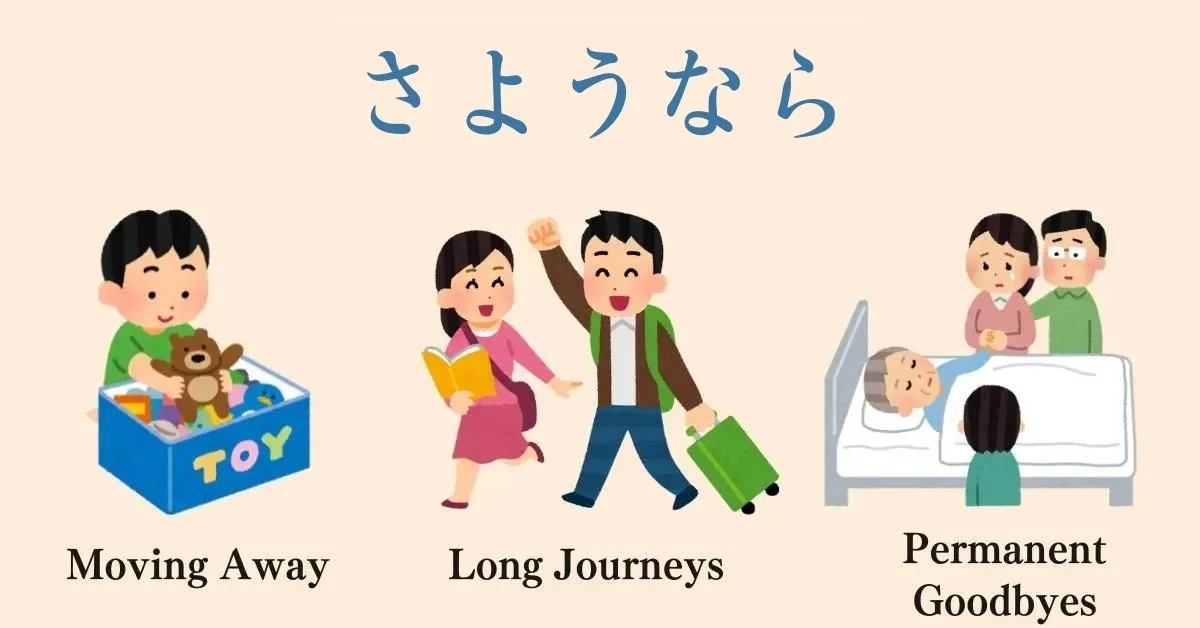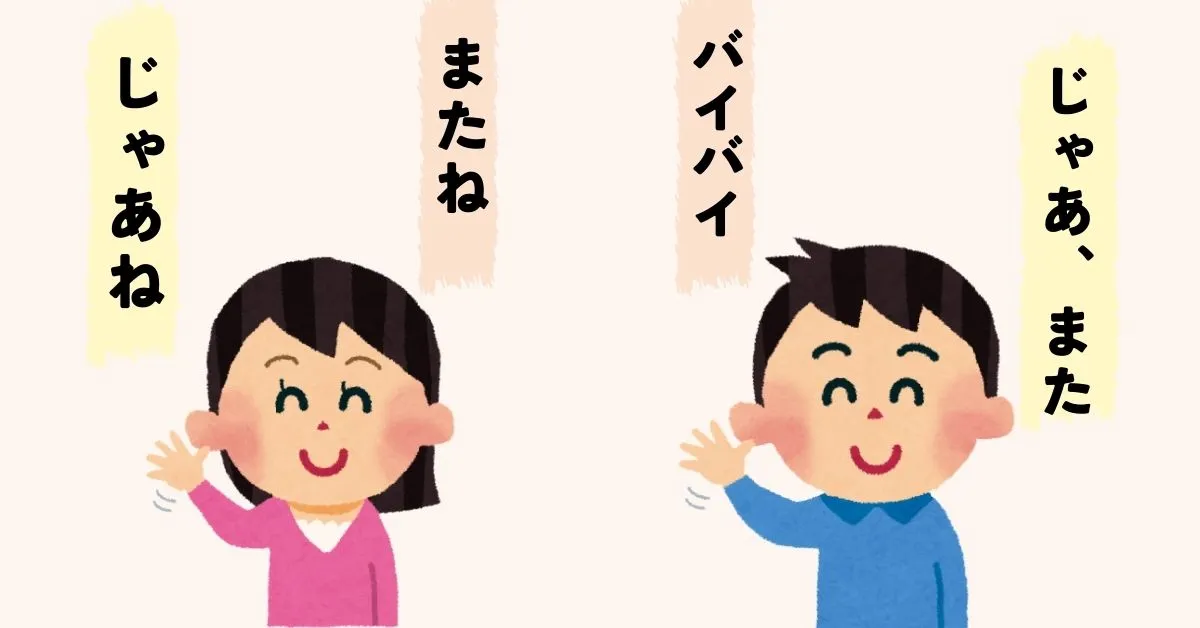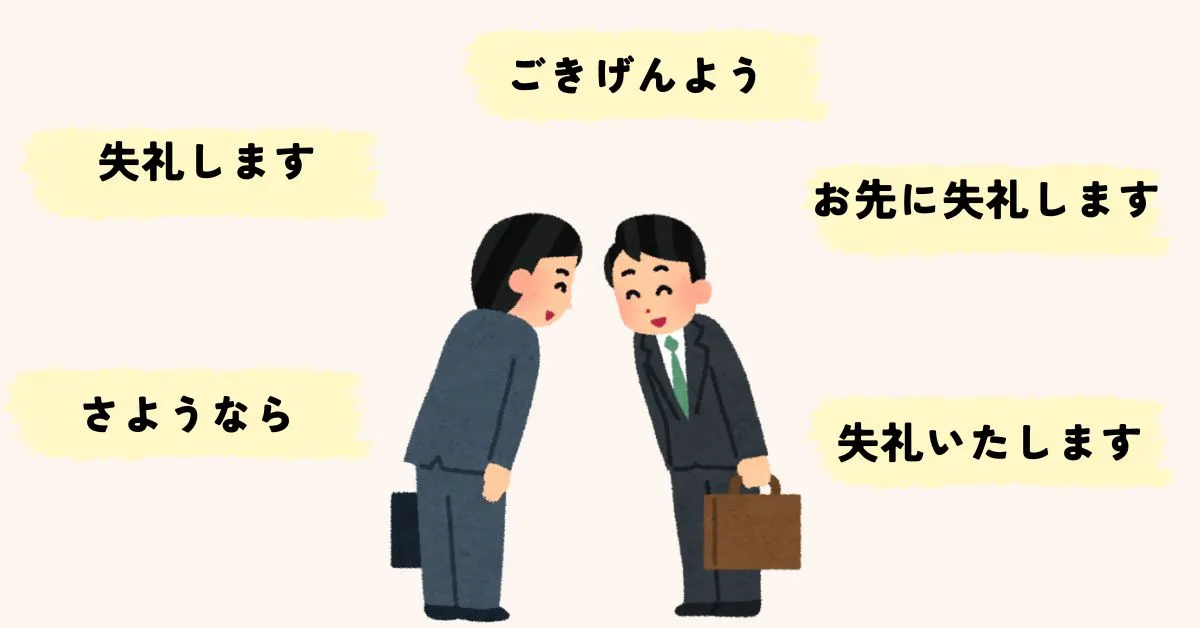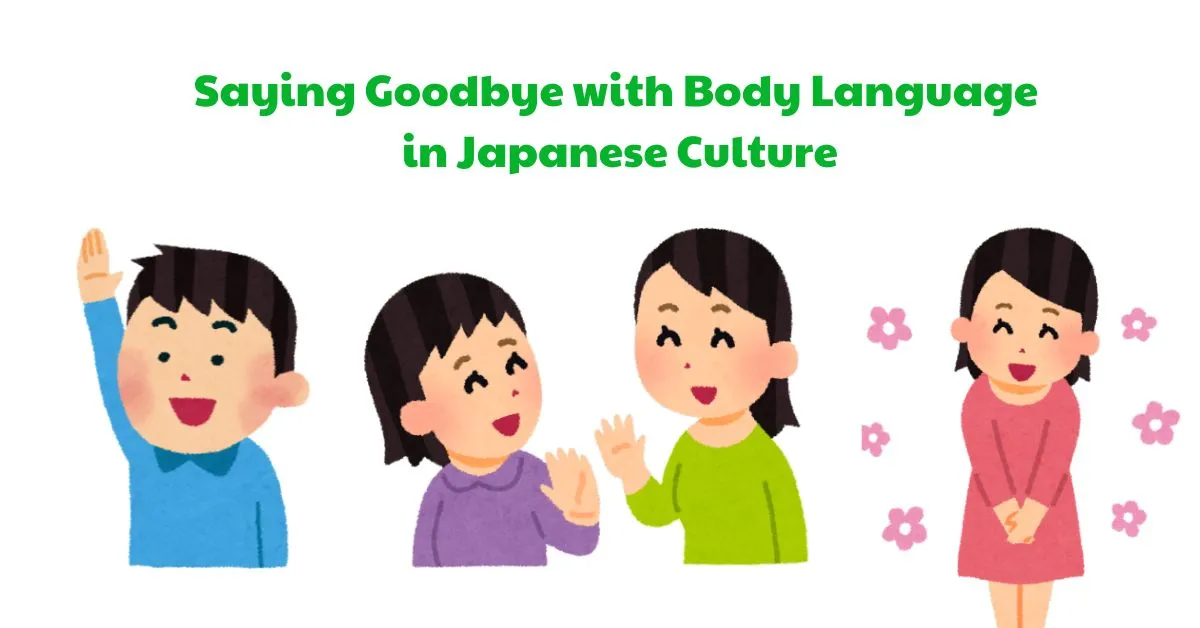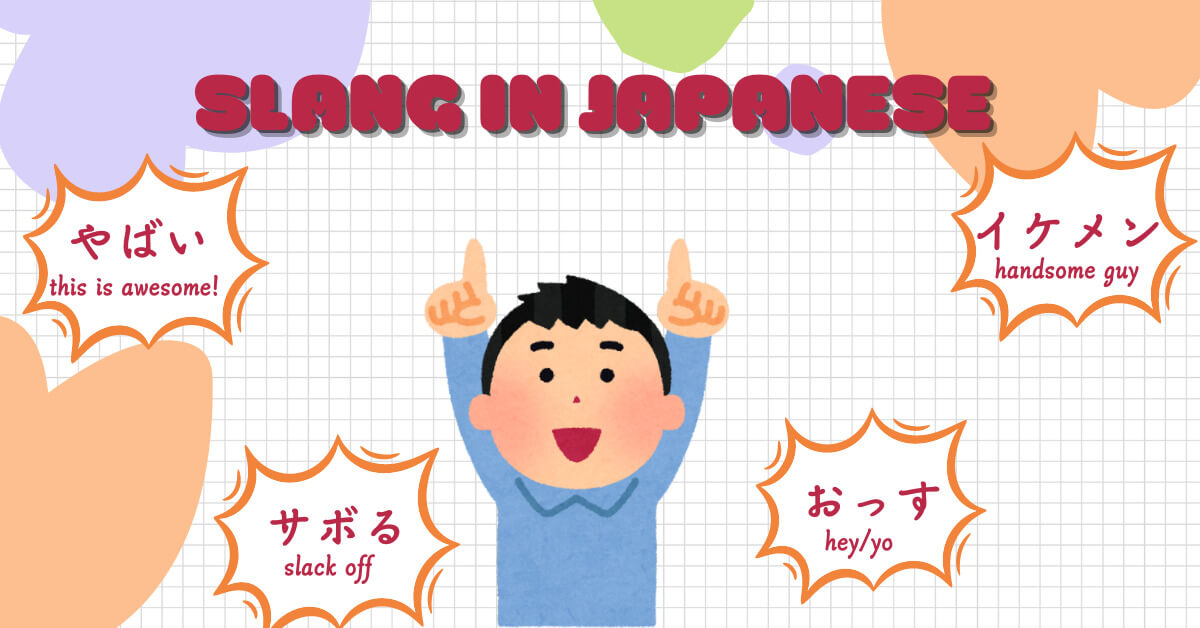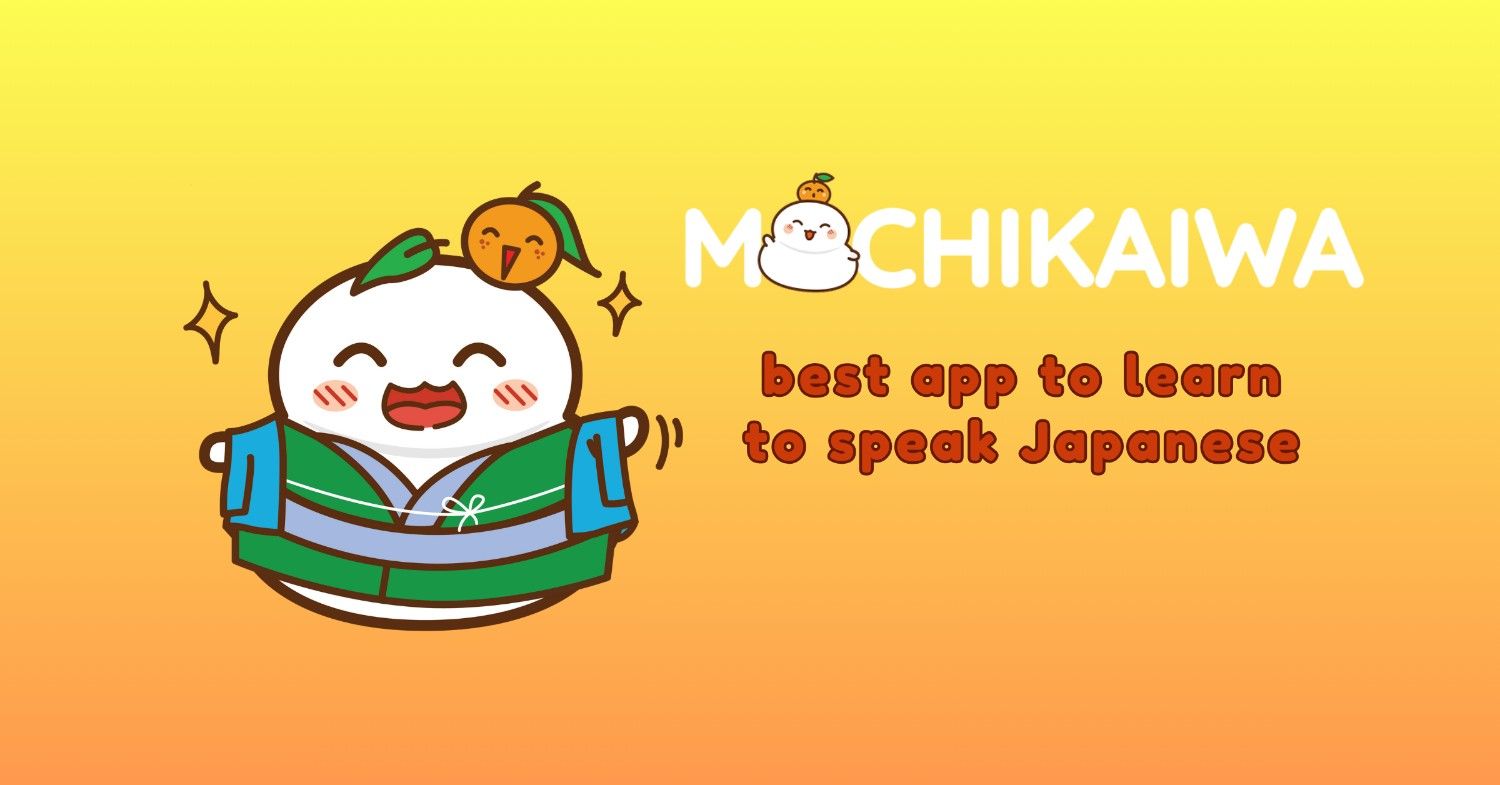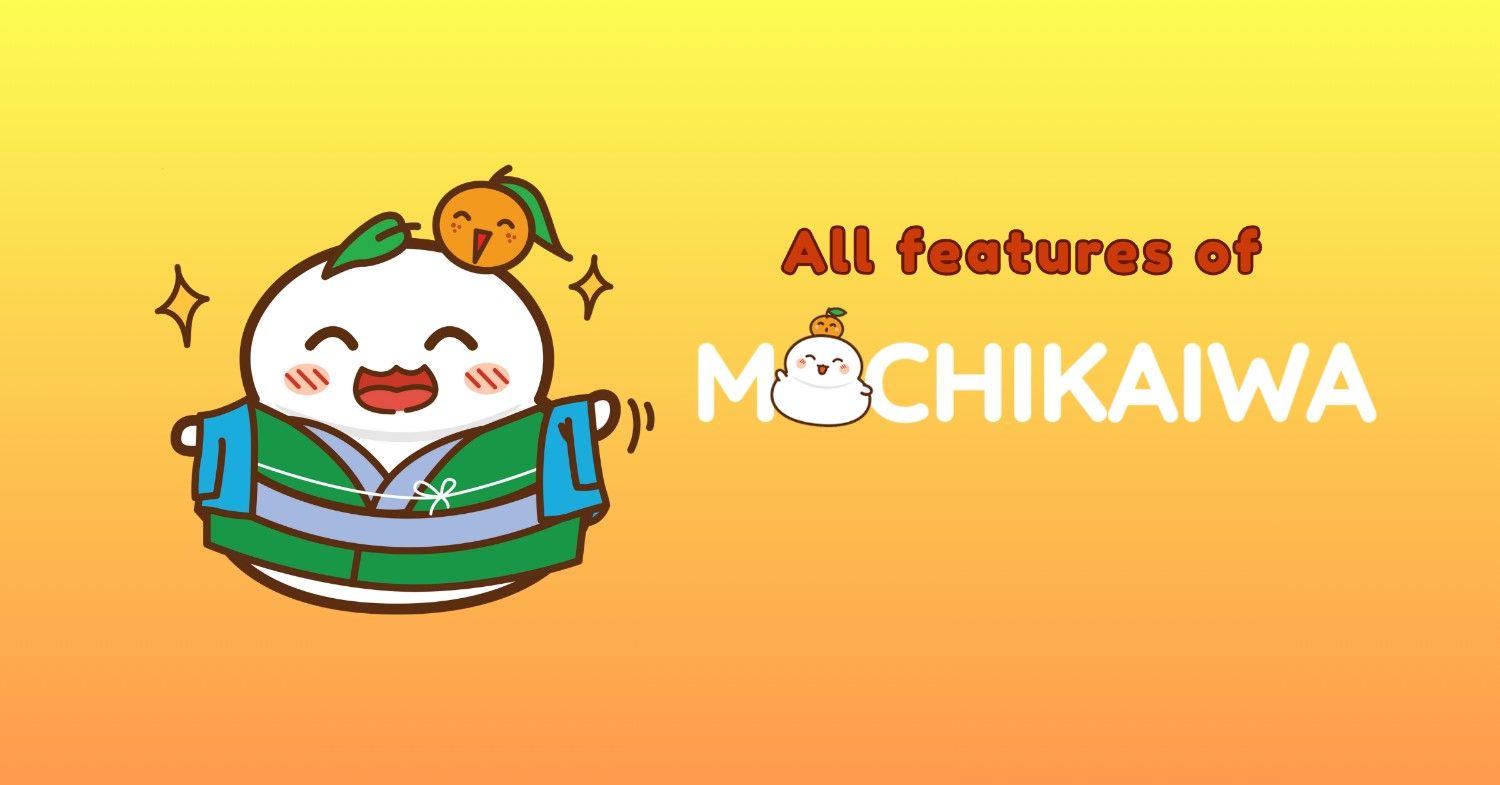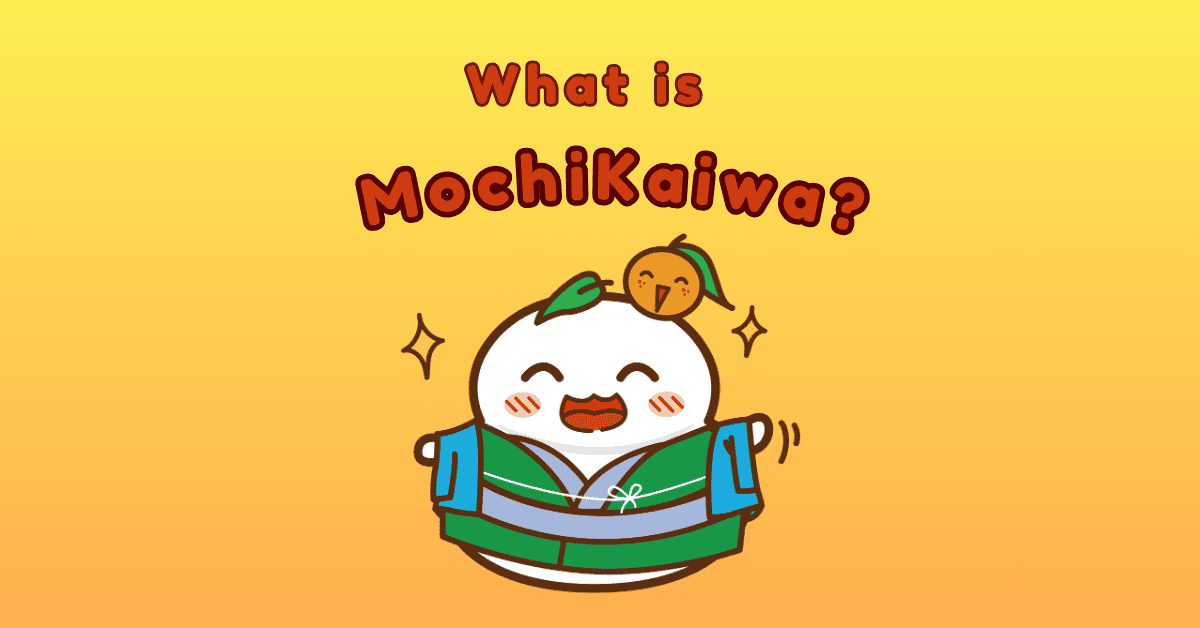When learning how to say bye in Japanese, many people first learn the word “Sayonara.” However, Sayonara is a way to say Goodbye but we don’t use that in everyday conversation. Here’s why, and what you should use instead.
- What Does Sayonara Actually Mean?
- Situations Where “Sayonara” Can and Cannot Be Used
- When we use “Sayonara”?
- Formal and business ways to say goodbye
- Cultural Aspect: How to Express Goodbye with Your Body Language
- Conclusion
- FAQs

What does sayonara actually mean?
“Sayonara” translates to “goodbye”. Derived from the phrase “さようなら (Sayounara),” it means “if it must be so,” carrying a sense of finality and long-term separation. This implication of permanence makes “Sayonara” a word often used for significant partings. It can bear emotional weight similar to the English word “farewell,” often used in substantial or dramatic moments. Nevertheless, “Sayonara” can also be employed in everyday goodbyes without heavy emotional undertones. In Japanese culture, it is not exclusively reserved for serious farewells; it can be used in various situations, such as a teacher ending a class or saying goodbye to friends daily.
Situations where “Sayonara” can and cannot be used
We should not use “Sayonara” with people we have close relationships with, such as family or friends. For instance, when you leave the house in the morning, you don’t say “goodbye” to your mother. Also, when you say “Sayonara” to a friend, it might feel like a cold and distant relationship.
However, we often encounter situations when “Sayonara” is used, such as when teachers and students use it as a farewell after class and leave the classroom. It can also be used as a daily farewell with a neighbor when you happen to meet them outside.
However, it is easy to notice that Japanese people don’t use the word “Sayonara” very often.
When we use “Sayonara”?
Given its weighty connotation, Sayonara is best reserved for situations where you won’t see the person for a long time, such as:
・Moving Away: If someone is relocating to another city or country, Sayonara would be appropriate. For instance, if a colleague is transferring to a different office overseas, you might use Sayonara to acknowledge the long-term nature of the farewell.
・Long Journeys: Like when a friend embarks on a lengthy trip. For example, Sayonara would be appropriate if someone is going on a year-long backpacking trip around the world.
・Permanent Goodbyes: Any situation where you are saying a final farewell, such as leaving a job for good or ending a significant chapter in life, warrants the use of Sayonara. This could be used when someone is retiring or moving on to a new career path which means you won’t see them in a professional context again.
Casual ways to say goodbye naturally
For more casual goodbyes, especially among friends and family, the following phrases are commonly used:
・じゃあね (Jaa ne): This means “See you” and is great for informal situations among friends and family. It’s akin to saying “Later!” or “See ya!” in English. This phrase is commonly used among friends and family, conveying a sense of informal camaraderie.
・またね (Mata ne): This translates to “See you again” and is a friendly, casual way to part. It conveys a sense of looking forward to the next meeting. For instance, you might say “Mata-ne” to a friend as you part ways after a casual meeting.
・バイバイ (Bai bai): A simple “Bye-bye,” often used among younger people. This phrase, borrowed from English, is widely understood and carries a very informal tone. It’s often used among close friends, especially children and teenagers.
・じゃあ、また (Jaa, mata): This combines the casual “See you” (Ja) with “again” (mata), making it a friendly and somewhat informal way to say “See you later.”
These casual expressions reflect the ease and warmth of interpersonal relationships in Japanese society. Using them correctly can help you blend in and express yourself naturally.
For those looking to expand their Japanese vocabulary and practice casual phrases, apps like MochiKanji can be incredibly helpful. MochiKanji offers interactive tools to enhance your language learning experience, making it easier to remember and use phrases like these in everyday conversations.
Formal and business ways to say goodbye
In professional or formal settings, it’s important to use respectful language. Here are some phrases that are appropriate in professional or formal situations:
・失礼します (Shitsurei shimasu): This phrase means “Excuse me” or “I’m being rude by leaving,” and is used when leaving a room or conversation in a business environment. It’s a polite way to excuse yourself and show respect for the ongoing activities. For example, if you need to leave a meeting early, you would say “Shitsurei shimasu” to the remaining participants.
・お先に失礼します (Osaki ni shitsurei shimasu): “Excuse me for leaving before you,” commonly said when leaving work before colleagues. It acknowledges that others are still working and conveys respect for their continued efforts. It’s a way of showing humility and respect towards your coworkers.
・ごきげんよう (Gokigenyou): A very formal and somewhat old-fashioned farewell, akin to “Farewell” in English. It’s often used in high-society or ceremonial contexts. For instance, it might be used in formal letters or speeches.
・さようなら (Sayounara): In some formal contexts, especially if the departure is significant, the use of Sayonara might be appropriate. However, this is less common in business and more common in formal ceremonies or cultural events.
・失礼いたします (Shitsurei itashimasu): A more formal version of 失礼します, often used when addressing clients or superiors. This phrase adds an extra level of politeness, appropriate for very respectful contexts such as formal business meetings or when interacting with important clients.
Understanding the context and the level of formality required is crucial in Japanese culture. Using the appropriate phrase shows respect and social awareness, which is highly valued in professional settings.
Cultural aspect: How to express Goodbye with your body language
In Japan, non-verbal cues are just as important as words. Body language, particularly bowing, plays a significant role in how goodbyes are expressed:
・Casual goodbye: A slight nod or small bow is enough among friends and family. This gesture is informal and friendly, indicating respect without being overly formal. It’s similar to a small wave or a nod of the head in Western cultures.
・Formal goodbye: A deeper bow is expected in business settings or when showing respect to someone of higher status. The depth and duration of the bow can convey the level of respect and gratitude. For example, when parting from a senior colleague or client, a 30-degree bow is appropriate.
・Eye contact: While maintaining eye contact is important, it should be moderate. Too much eye contact can be seen as aggressive, while too little can be perceived as disrespectful. Striking the right balance shows attentiveness and respect.
・Hand gestures: In casual settings, a wave can accompany verbal goodbyes; in formal settings, hand gestures should be minimal. Excessive hand movements can be seen as distracting or unprofessional.
Mastering these non-verbal cues can greatly enhance your ability to communicate effectively and respectfully in Japanese society. Understanding and implementing these subtleties show that you are aware of and respect the cultural norms.
Tips for mastering Japanese conversation naturally
1. Listen and mimic:
Observe native speakers and mimic their intonation and body language. This can help you sound more natural and understand the subtleties of the language. Watching Japanese TV shows, and movies, and listening to podcasts can provide great exposure.
2. Practice regularly:
Use these phrases in your daily interactions to become more comfortable. Consistent practice will help solidify your understanding and usage.
3. Be context-aware:
Always consider the context and relationship with the person when choosing your goodbye phrase. The level of formality required can vary greatly depending on the situation.
4. Learn the culture:
Understanding the cultural nuances and expectations in different situations will help you use the right phrase naturally. Familiarize yourself with social hierarchies and respect levels.
5. Learn more ways to express apologies:
Expand your vocabulary master apology phrases and learn how to use them in the right context. You can take advantage of Japanese learning apps like MochiKanji. MochiKanji not only supports learning Kanji but also offers other Japanese courses from basic to advanced with various topics closely related to real life, learners can immediately apply what they’ve studied.
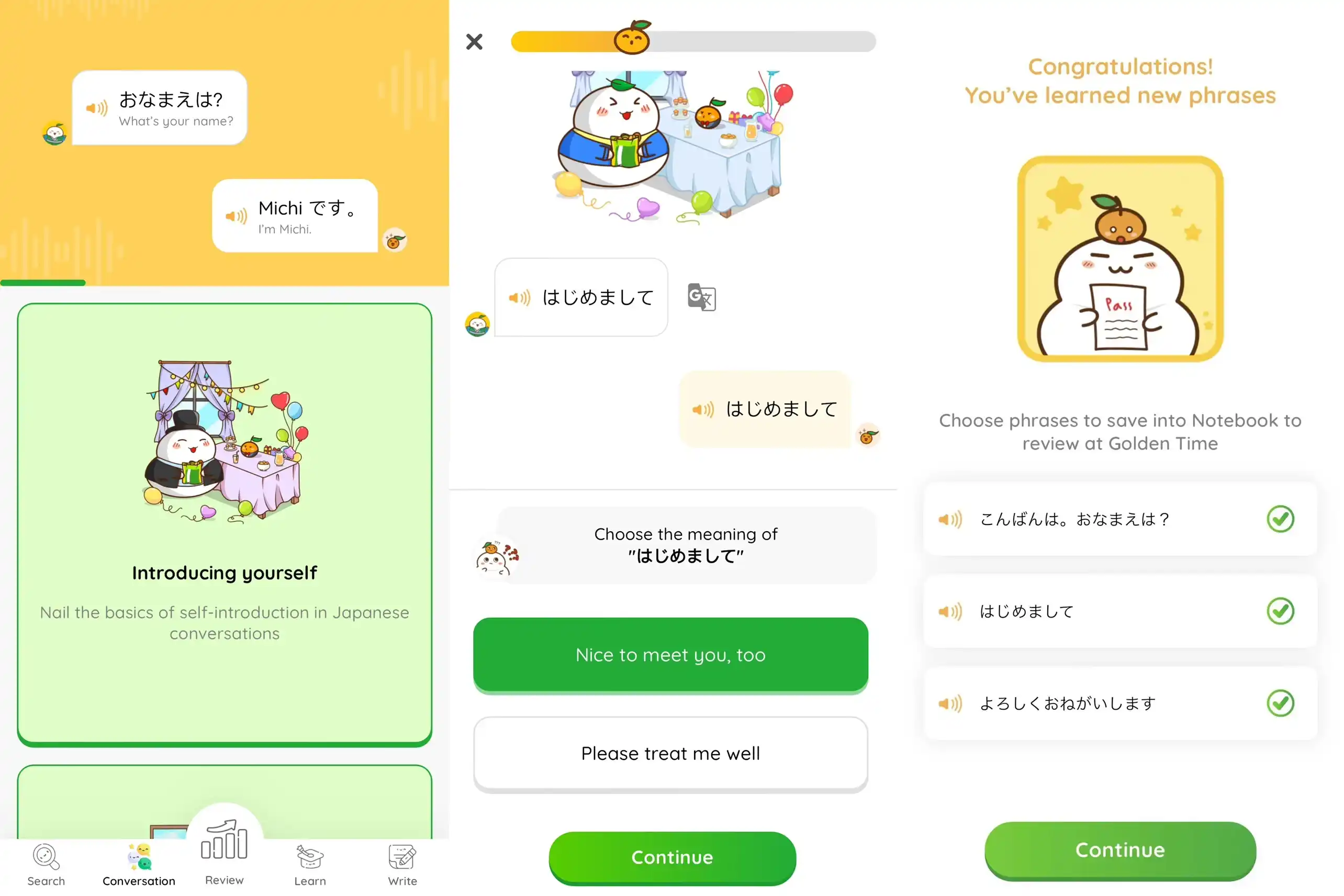
MochiKanji provides a comprehensive course on basic Japanese conversation, integrating the spaced repetition system (SRS) to help you retain what you learn. SRS schedules reviews at optimal intervals to strengthen your memory, ensure you remember vocabulary in phrases just as you’re about to forget them. This method is highly effective for building a solid foundation in conversational Japanese, including mastering various ways to say goodbye.
By understanding these nuances, you’ll be able to say goodbye in Japanese more naturally and appropriately. Remember, mastering a language involves not just the words but also the cultural context and body language that accompany them.
Conclusion
Saying goodbye in Japanese involves much more than just knowing the word “Sayonara.” It requires an understanding of the context, the relationship between the speakers, and the appropriate level of formality. From casual goodbyes among friends to formal farewells in business settings, each phrase carries its own weight and significance. By learning and practicing these phrases, and paying attention to non-verbal cues like bowing, you can communicate respect and understanding in your interactions. This mastery of linguistic and cultural nuances fosters meaningful connections and contributes to a deeper immersion in Japanese society. Ultimately, mastering these elements will empower you to navigate the diverse social and professional landscapes of Japan with confidence and cultural sensitivity, enriching your experiences and relationships along the way.
FAQs
How do you say bye in Japanese?
In Japanese, there are several ways to say “bye,” depending on the context and formality:
- “Bye bye” – While “bye bye” (バイバイ, bai bai) is commonly used in casual situations and often among friends, it is borrowed from English and might not always be considered formal Japanese.
- “Sayonara” – “Sayonara” (さよなら) is a more formal and traditional way to say goodbye. It can imply a longer-term farewell, often used when you don’t expect to see the person for a while.
- “Ja ne” – “Ja ne” (じゃね) is an informal and friendly way to say “see you” or “bye” among friends. It’s similar to saying “see you later” in English.
Is it bye bye or Sayonara?
The choice between “bye-bye” and “sayonara” in Japanese depends on the context:
Sayonara (さようなら): This is more formal and used when you expect not to see someone for a longer period of time or in more serious contexts. It’s like saying “goodbye” in a more formal sense.
Bye-bye (バイバイ, bai bai): This is informal and often used in casual settings, especially among children or in relaxed situations. It’s akin to saying “bye” in English.
What is ja ne in Japanese?
“Ja ne” (じゃね) is a casual and informal way to say goodbye, similar to saying “see you” or “bye” in English. It’s often used among friends or people of the same age in informal settings.
How to politely say bye?
To say goodbye politely in Japanese, you can use:
- 失礼します (しつれいします, shitsurei shimasu): This phrase literally means “I’m being rude” and is used when leaving a formal setting or when exiting a conversation in a polite manner.
- お疲れ様でした (おつかれさまでした, otsukaresama deshita): This is used to express appreciation for someone’s hard work, often used at the end of a workday or after a project.
- さようなら (sayonara): As mentioned, this is a more formal way to say goodbye and can be used in polite contexts.

